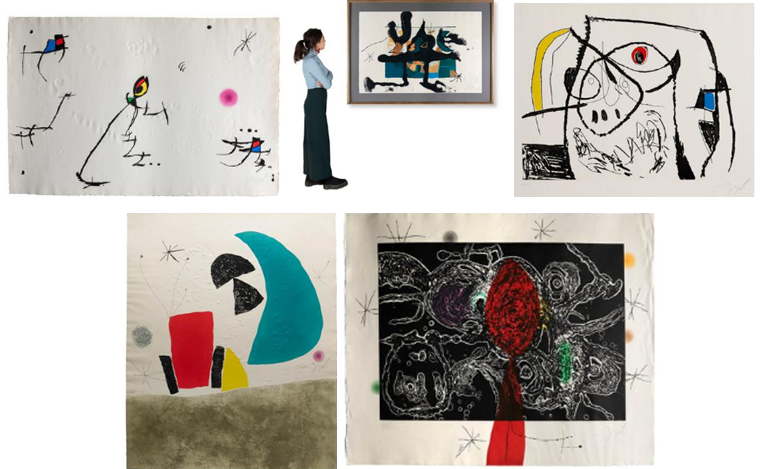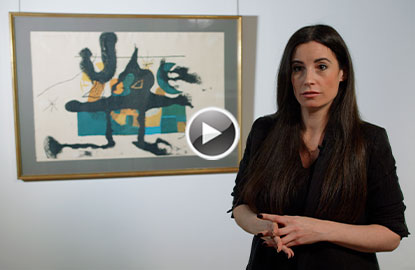Joan Miró: the freedom of creation in graphic work.
Under the unmistakable style with which we instantly identify the work of Joan Miró, hides the universal character of one of the most unique and groundbreaking creators that the artistic avant-gardes gave us. The personal language that the artist reached by diving into the fertile sea of isms, gave birth to a completely new form of expression, which he developed through multiple artistic techniques. In this sense, the facet as an engraver and lithographer in which Miró will turn from the middle of the century, constitutes one of the largest and richest contributions to the world of graphics of the last century.
From the series of Etchings, carborundums and aquatints gathered in our auction on the 21st, synthesize a large part of the most recognizable and unique aspects that made up the style of one of the most influential artists of the 20th century. The importance of the Miró graph finds its reflection in the splendid moment that lives within the artistic market , where his work continues to be one of the great protagonists. As shown by the auctions he reaches at auction, the Catalan artist remains, year after year, at the head of the most desired and valued artists in the collecting sector, both in the national and international markets.
Completely freed from any academic imposture or hint of conventionality, Miró began his graphic work when he was already a recognized artist. Like the great nonconformist that he was, after a first contact with engraving techniques in Paris in the 1930s, Miró is imbued in a constant process of experimentation with the different chalcographic aspects and their multiple plastic and aesthetic possibilities, until reaching, during the decade of the 70s, the peak of its production.

This set of engravings that represent the fullness of plastic language and technical virtuosity belongs to this decade. with which he developed some of his most emblematic series such as Mallorca (lot 35217452) , Barcelona (lot 35217450 and 35185247) or Espriu (lots 35217449 and 35217451) . In them, Miró will give life to his particular conception and interpretation of surrealism, where, under the irrational and dreamlike substrate, he transforms objects and characters into symbols and forms that will accompany him, in an imperishable way, from his early years to the end of his life. career. Far from considering it as a secondary production or subordinate to the pictorial practice, Miró conceives a graphic work with its own entity, in which, even, anticipates aspects that he will later transfer to the pictorial creation.
In this sense, together with its personal and recognizable chromaticism, we can identify recurring elements such as silhouettes of an undefined character that, intermingling the geometric with the organic, are held in the void of their characteristic white backgrounds, the small bursts of color that emerge from the surface or the everlasting symbols that, like the star, the spiral or the eye, made up the vast Mironian universe.
In addition to the plastic aspects, Miró reflects in his work as an engraver three fundamental concepts that will run through his entire career. While in series like “Barcelona” and “Mallorca”, the deep roots that united him to his land , in the engravings belonging to the “Espriu-Miró” series, the iron commitment to the culture and politics of your country . Likewise, his passion for poetry and the relationship he maintained with the great poets of the moment, will exert an intense influence that will lead him to plastically transfer the poetic universe of figures, such as Salvador Espriu or JV Foix. In this regard and thanks, above all, to the ties that united poets and painters in the surrealist stage, Miró collaborates in the production of multiple books that, like the one presented here, will illustrate the verses of Tristan Tzara with more than 73 lithographs for “Parler Seul” (batch 35226862) .
“That people understand that I helped liberate not only painting, but the spirit of men” With these words, Miró reveals to us the true reason behind which he conceives all his creation and, that as a monumental exercise of creative freedom it transpires in each and every one of his graphic works,



